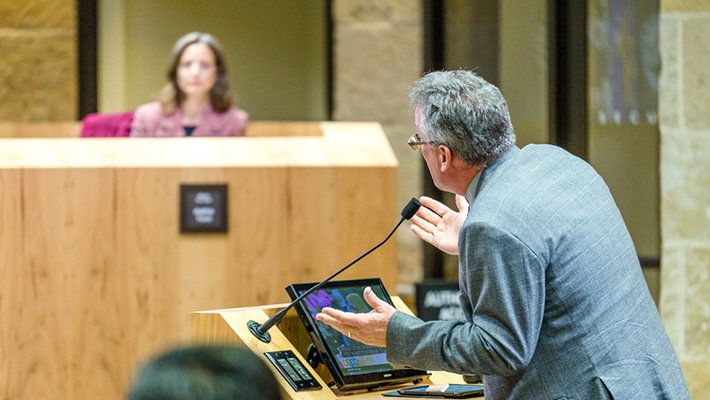
-
HOME
-
WHAT IS STANDOur Mission Our Values Our Help Contact
-
WHAT WE FIGHT FORReligious Freedom Religious Literacy Equality & Human Rights Inclusion & Respect Free Speech Responsible Journalism Corporate Accountability
-
RESOURCESExpert Studies Landmark Decisions White Papers FAQs David Miscavige Religious Freedom Resource Center Freedom of Religion & Human Rights Topic Index Priest-Penitent Privilege Islamophobia
-
HATE MONITORBiased Media Propagandists Hatemongers False Experts Hate Monitor Blog
-
NEWSROOMNews Media Watch Videos Blog
-
TAKE ACTIONCombat Hate & Discrimination Champion Freedom of Religion Demand Accountability
The Tribes of Bad and Good
A few years ago, a seven-year-old boy waving a Pop Tart and saying “bang bang” was suspended from school in Maryland. The school had a “zero-tolerance” policy regarding guns, and the Pop Tart crossed the line.
Likewise, children have been suspended from school for possessing aspirin or for bringing a paring knife in their lunch boxes.
Zero-tolerance measures follow two-valued logic: something or someone is either right or wrong, good or evil, true or false, and by that logic, drugs are forbidden in school and aspirin, marijuana or heroin are treated equally, as are guns and Pop Tarts. But while perhaps well-intended, that kind of logic leaves something to be desired, and has infected many areas of society.

Perhaps our fascination with the simplicity of two-valued logic is the success of our digital devices, which operate primarily on the basis of yes, no, ones and zeros. But the analog universe offers an infinite spectrum of musical notes, for example, while the digital admits only ones and zeros. Bureaucracies are particularly fond of two-valued logic, perhaps because a law or regulation in black and white avoids the mess and bother of using reason to sort out a problem or conflict. If the woman floats, she’s a witch. If she sinks, she’s innocent.
Human beings can weigh options in an analog fashion to come to a decision that sits somewhere on a scale between “a really bad idea” and “Nobel Prize winner.”
That’s not to say that laws are inherently bad; they are the generally agreed-upon rules of conduct that a society has found useful in promoting survival, and so those laws and rules are enforced for the good of the society. That process, justice, is applied to members of the society who make personal choices that cause harm to themselves or others.
That being the case, while two-valued logic is quite rigid, Infinity-valued logic supposes that there are many degrees of something—“a spectrum which moves from infinite wrongness to infinite rightness” said Scientology Founder L. Ron Hubbard. A child whose mother put two aspirin in her child’s backpack because he had a sunburn would thus be closer to “rightness” on the spectrum than a child who knowingly brought marijuana-laced cookies to share, which is closer to rightness than a kid who brought heroin onto campus to sell. And infinity-valued logic does not condemn a person or group out of hand, but provides a path to improvement, a nudge toward the “good” side of the scale.
In short, infinity-valued logic requires and enables judgment to differentiate, whereas two-valued logic robotically identifies something as either yes or no. Did the action violate the specifics of the law and therefore trigger the prescribed punishment, yes or no?
Human beings can weigh options in an analog fashion to come to a decision that sits somewhere on a scale between “a really bad idea” and “Nobel Prize winner.” Telling the kid that he should eat his pastry pistol or lose it would probably have sufficed, rather than a mandatory minimum sentence of suspension.

Unfortunately, political parties have caught the two-valued disease, attacking those who dare escape rigid party orthodoxy, carefully excising the broad spectrum of choices and ideas, leaving only the pre-packaged options of left and right. Lawmakers seeking to quash the interpretations of judges have made laws more and more specific, leaving little room for judgment as to culpability or punishment. The result is a gradual calcification, a smaller and smaller arena of actual decision-making choices that can be left to individuals. But it is personal choice and reason which separate humans from robots, and modern civilization from warring tribes of the past.
Infinity-valued logic puts us all on the same scale; we may be located in different positions on that scale, but we’re all part of the same continuum. Two-valued logic sets up “them” and “us,” the good and the bad, saints and sinners separated with an iron bulwark. Talk about “zero tolerance!” It’s no surprise that bigots seek to jam the variety and complexity of life into two-valued logic—to paint anything they don’t like or understand with enemy colors. They dumb down logic as a way to separate us into two mutually incompatible camps, into warring tribes of bad and good.
So we increasingly live in an artificially created, two-valued world of free speech vs. hate speech; #metoo vs. innocent until proven guilty; LGBTQ rights vs. religious liberty; facts vs. fake news; the Second Amendment vs. gun control; Democrats vs. Republicans.
The favorite tools of the bigot are gossip, rumors and lies, and while in the past those were usually limited to word of mouth and restricted by the bad reputation of the rumormonger, today’s social media is an ideal growth medium to feed suspicion and two-valued tribalism. Research shows that bad news is shared with twice as many people as good news and with seemingly little interest as to its veracity. That combination is ideal for bigots to incite hatred and intolerance.
It takes some work to sort out the truth in any controversy. A good policy is to “look don’t listen” when searching for it. And when presented with only two choices, pick the third; look into the subject for yourself, and make your own decision.









